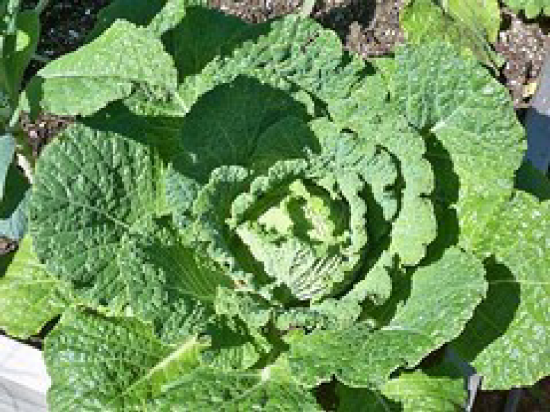3.2: Cabbages
- Page ID
- 21212
\( \newcommand{\vecs}[1]{\overset { \scriptstyle \rightharpoonup} {\mathbf{#1}} } \)
\( \newcommand{\vecd}[1]{\overset{-\!-\!\rightharpoonup}{\vphantom{a}\smash {#1}}} \)
\( \newcommand{\id}{\mathrm{id}}\) \( \newcommand{\Span}{\mathrm{span}}\)
( \newcommand{\kernel}{\mathrm{null}\,}\) \( \newcommand{\range}{\mathrm{range}\,}\)
\( \newcommand{\RealPart}{\mathrm{Re}}\) \( \newcommand{\ImaginaryPart}{\mathrm{Im}}\)
\( \newcommand{\Argument}{\mathrm{Arg}}\) \( \newcommand{\norm}[1]{\| #1 \|}\)
\( \newcommand{\inner}[2]{\langle #1, #2 \rangle}\)
\( \newcommand{\Span}{\mathrm{span}}\)
\( \newcommand{\id}{\mathrm{id}}\)
\( \newcommand{\Span}{\mathrm{span}}\)
\( \newcommand{\kernel}{\mathrm{null}\,}\)
\( \newcommand{\range}{\mathrm{range}\,}\)
\( \newcommand{\RealPart}{\mathrm{Re}}\)
\( \newcommand{\ImaginaryPart}{\mathrm{Im}}\)
\( \newcommand{\Argument}{\mathrm{Arg}}\)
\( \newcommand{\norm}[1]{\| #1 \|}\)
\( \newcommand{\inner}[2]{\langle #1, #2 \rangle}\)
\( \newcommand{\Span}{\mathrm{span}}\) \( \newcommand{\AA}{\unicode[.8,0]{x212B}}\)
\( \newcommand{\vectorA}[1]{\vec{#1}} % arrow\)
\( \newcommand{\vectorAt}[1]{\vec{\text{#1}}} % arrow\)
\( \newcommand{\vectorB}[1]{\overset { \scriptstyle \rightharpoonup} {\mathbf{#1}} } \)
\( \newcommand{\vectorC}[1]{\textbf{#1}} \)
\( \newcommand{\vectorD}[1]{\overrightarrow{#1}} \)
\( \newcommand{\vectorDt}[1]{\overrightarrow{\text{#1}}} \)
\( \newcommand{\vectE}[1]{\overset{-\!-\!\rightharpoonup}{\vphantom{a}\smash{\mathbf {#1}}}} \)
\( \newcommand{\vecs}[1]{\overset { \scriptstyle \rightharpoonup} {\mathbf{#1}} } \)
\( \newcommand{\vecd}[1]{\overset{-\!-\!\rightharpoonup}{\vphantom{a}\smash {#1}}} \)
\(\newcommand{\avec}{\mathbf a}\) \(\newcommand{\bvec}{\mathbf b}\) \(\newcommand{\cvec}{\mathbf c}\) \(\newcommand{\dvec}{\mathbf d}\) \(\newcommand{\dtil}{\widetilde{\mathbf d}}\) \(\newcommand{\evec}{\mathbf e}\) \(\newcommand{\fvec}{\mathbf f}\) \(\newcommand{\nvec}{\mathbf n}\) \(\newcommand{\pvec}{\mathbf p}\) \(\newcommand{\qvec}{\mathbf q}\) \(\newcommand{\svec}{\mathbf s}\) \(\newcommand{\tvec}{\mathbf t}\) \(\newcommand{\uvec}{\mathbf u}\) \(\newcommand{\vvec}{\mathbf v}\) \(\newcommand{\wvec}{\mathbf w}\) \(\newcommand{\xvec}{\mathbf x}\) \(\newcommand{\yvec}{\mathbf y}\) \(\newcommand{\zvec}{\mathbf z}\) \(\newcommand{\rvec}{\mathbf r}\) \(\newcommand{\mvec}{\mathbf m}\) \(\newcommand{\zerovec}{\mathbf 0}\) \(\newcommand{\onevec}{\mathbf 1}\) \(\newcommand{\real}{\mathbb R}\) \(\newcommand{\twovec}[2]{\left[\begin{array}{r}#1 \\ #2 \end{array}\right]}\) \(\newcommand{\ctwovec}[2]{\left[\begin{array}{c}#1 \\ #2 \end{array}\right]}\) \(\newcommand{\threevec}[3]{\left[\begin{array}{r}#1 \\ #2 \\ #3 \end{array}\right]}\) \(\newcommand{\cthreevec}[3]{\left[\begin{array}{c}#1 \\ #2 \\ #3 \end{array}\right]}\) \(\newcommand{\fourvec}[4]{\left[\begin{array}{r}#1 \\ #2 \\ #3 \\ #4 \end{array}\right]}\) \(\newcommand{\cfourvec}[4]{\left[\begin{array}{c}#1 \\ #2 \\ #3 \\ #4 \end{array}\right]}\) \(\newcommand{\fivevec}[5]{\left[\begin{array}{r}#1 \\ #2 \\ #3 \\ #4 \\ #5 \\ \end{array}\right]}\) \(\newcommand{\cfivevec}[5]{\left[\begin{array}{c}#1 \\ #2 \\ #3 \\ #4 \\ #5 \\ \end{array}\right]}\) \(\newcommand{\mattwo}[4]{\left[\begin{array}{rr}#1 \amp #2 \\ #3 \amp #4 \\ \end{array}\right]}\) \(\newcommand{\laspan}[1]{\text{Span}\{#1\}}\) \(\newcommand{\bcal}{\cal B}\) \(\newcommand{\ccal}{\cal C}\) \(\newcommand{\scal}{\cal S}\) \(\newcommand{\wcal}{\cal W}\) \(\newcommand{\ecal}{\cal E}\) \(\newcommand{\coords}[2]{\left\{#1\right\}_{#2}}\) \(\newcommand{\gray}[1]{\color{gray}{#1}}\) \(\newcommand{\lgray}[1]{\color{lightgray}{#1}}\) \(\newcommand{\rank}{\operatorname{rank}}\) \(\newcommand{\row}{\text{Row}}\) \(\newcommand{\col}{\text{Col}}\) \(\renewcommand{\row}{\text{Row}}\) \(\newcommand{\nul}{\text{Nul}}\) \(\newcommand{\var}{\text{Var}}\) \(\newcommand{\corr}{\text{corr}}\) \(\newcommand{\len}[1]{\left|#1\right|}\) \(\newcommand{\bbar}{\overline{\bvec}}\) \(\newcommand{\bhat}{\widehat{\bvec}}\) \(\newcommand{\bperp}{\bvec^\perp}\) \(\newcommand{\xhat}{\widehat{\xvec}}\) \(\newcommand{\vhat}{\widehat{\vvec}}\) \(\newcommand{\uhat}{\widehat{\uvec}}\) \(\newcommand{\what}{\widehat{\wvec}}\) \(\newcommand{\Sighat}{\widehat{\Sigma}}\) \(\newcommand{\lt}{<}\) \(\newcommand{\gt}{>}\) \(\newcommand{\amp}{&}\) \(\definecolor{fillinmathshade}{gray}{0.9}\)The Brassica or cabbage family includes a wide range of vegetables used for their heads, flowers or leaves. They are generally quick-growing, cool-weather crops. Many are ancient plants with unknown origins. They are inexpensive, readily available and easy to prepare.
Bok Choy
Bok choy, also known as ‘pok choy’, is a white-stemmed variety of southern Chinese cabbage. The relatively tightly packed leaves are dark green, with long white ribs attached at a bulbous stem. The stalks are crisp and mild with a flavor similar to romaine lettuce. Although bok choy may be eaten raw, it is most often stir-fried or used in soups.
Select heads with bright white stalks and dark green leaves; avoid those with brown, moist spots. Fresh bok choy is available all year. Jars of pickled and fermented bok choy (known as Korean kimchee) are also available.
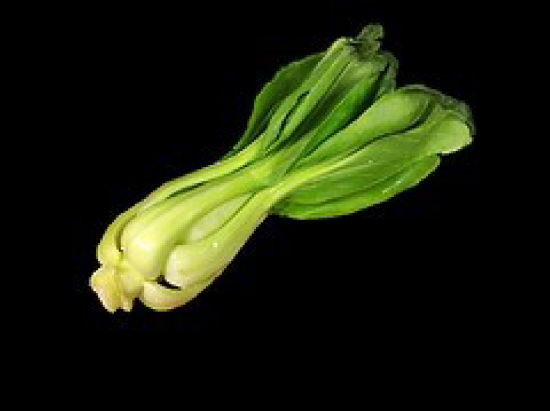
Broccoli
Broccoli, a type of flower, has a thick central stalk with grayish-green leaves topped with one or more heads of green florets. Broccoli may be eaten raw or steamed, microwaved or sautéed and served warm or cold. Broccoli stalks are extremely firm and benefit from blanching. Stems are often slow-cooked for soups. Generally, broccoli leaves are not eaten.
- Select firm stalks with compact clusters of tightly closed dark green florets. Avoid stalks with yellow flowers. Broccoli is available all year.
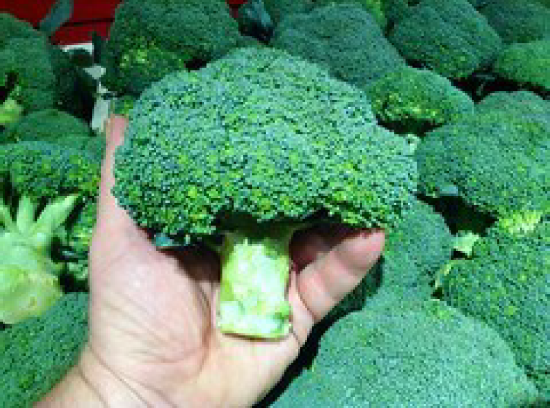
Brussel Sprouts
Brussels sprouts) were first cultivated around 1700. The plant produces numerous small heads arranged in neat rows along a thick stalk. The tender young sprouts are similar to baby cabbages and are usually steamed or roasted. Brussels sprouts have a strong, nutty flavor that blends well with game, ham, duck or rich meats.
- Select small, firm sprouts that are compact and heavy. The best size is 3/4 to 11/ 2 inches (2 to 4 centimeters) in diameter. They should be bright green and free of blemishes. Their peak season is from September through February.
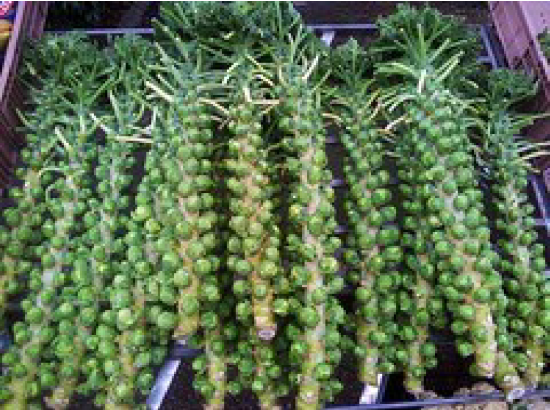
Cauliflower
Cauliflower is the king of the cabbage family. Each stalk produces one flower or head surrounded by large green leaves. The head, composed of creamy white florets, can be cooked whole or cut into separate florets for steaming, blanching or stir-frying.
- Select firm, compact heads. Any attached leaves should be bright green and crisp. A yellow color or spreading florets indicate that the vegetable is overly mature. Cauliflower is available all year, especially from the late fall through the spring.
Head Cabbages (Green and Red)
Cabbage has been a staple of northern European cuisine for centuries. The familiar green cabbage has a large, firm, round head with tightly packed pale green leaves. Flat and cone-shaped heads are also available. Red (or purple) cabbage is a different strain and may be tougher than green cabbage. Cabbage can be eaten raw (as in coleslaw), or used in soups or stews; it can be braised, steamed or stir-fried. The large, waxy leaves can also be steamed until soft, and then wrapped around a filling of seasoned meat.
- Select firm heads without dried cores. Cabbages are available all year.
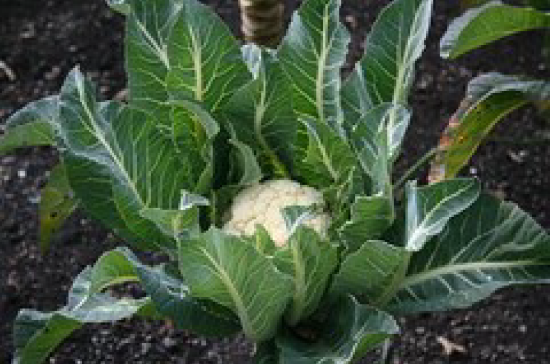
Kale
Kale has large ruffled, curly or bumpy leaves. Its rather bitter flavor goes well with rich meats such as game, pork or ham. Kale is typically prepared boiled, stuffed, or used in soups.
Select leaves that are crisp, with a grayish-green color. Kale is available all year; its peak season is during the winter months. Ornamental or flowering kale, sometimes marketed as "savoy," is edible, but its pink, purple, yellow or white -and-green variegated leaves are best used for decoration and garnish.
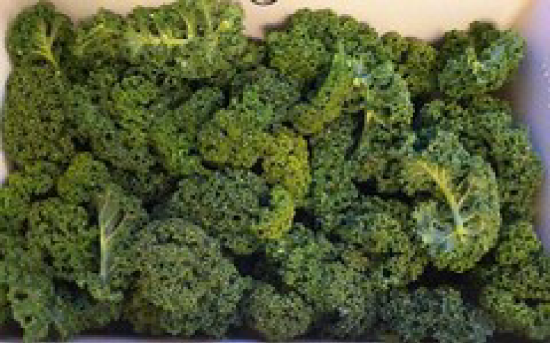
Kohlrabi
Although it looks rather like a round root, kohlrabi is actually a bulbous stem vegetable created by crossbreeding cabbages and turnips. Both the leaves (which are attached directly to the bulbous stem) and the roots are generally removed before sale. Depending on the variety, the skin may be light green, purple or green with a hint of red. The interior flesh is white, with a sweet flavor similar to that of turnips. (Kohlrabi can be substituted for turnip in many recipes.) Younger plants are milder and tenderer than large, mature ones. The outer skin must be removed from mature stems; young stems need only to be well scrubbed before cooking. Kohlrabi can be eaten raw, or it can be cooked (whole, sliced or diced) with moist-heat cooking methods such as boiling and steaming. Kohlrabi can be hollowed out and stuffed with meat or vegetable mixtures.
- Select small, tender stems with fresh, green leaves. Peak season for kohlrabi is from June through September.
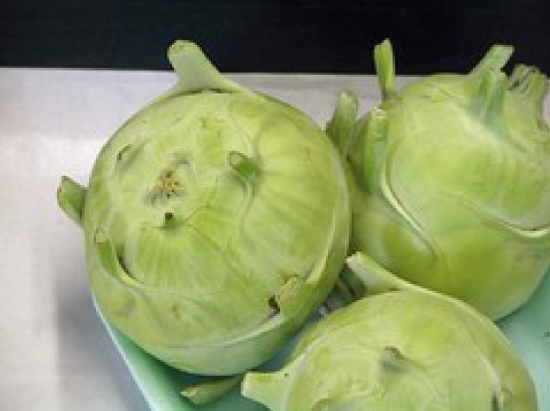
Napa Cabbage
Napa cabbage, also known as Chinese cabbage, is widely used in Asian cuisines. It has a stout, elongated head with relatively tightly packed, firm, pale green leaves. It is more moist and more tender than common green and red cabbages, with a milder, more delicate flavor. Napa cabbage may be eaten raw but is particularly well suited for stir- frying or steaming.
- Select heads with crisp leaves that are free of blemishes. Napa cabbage is available fresh all year.
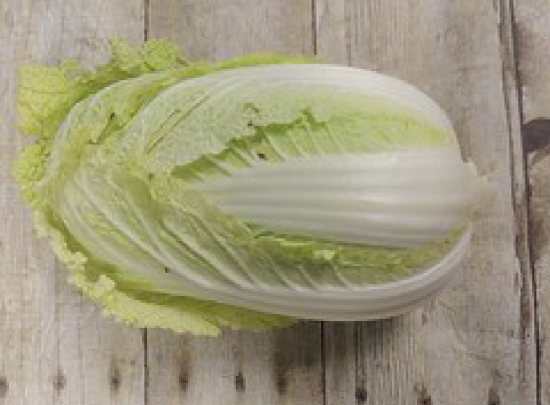
Savoy
Savoy cabbage has curly or ruffled leaves, often in variegated shades of green and purple. (The term savoy is used to refer to any vegetable with bumpy, wavy or wrinkled leaves.) Savoy cabbage tends to be milder and more tender than regular cabbages and can be substituted for them, cooked or uncooked. Savoy leaves also make an attractive garnish.
- Select heads that are loose or tight, depending on the variety, with tender, unblemished leaves. Peak season is from August through the spring.
